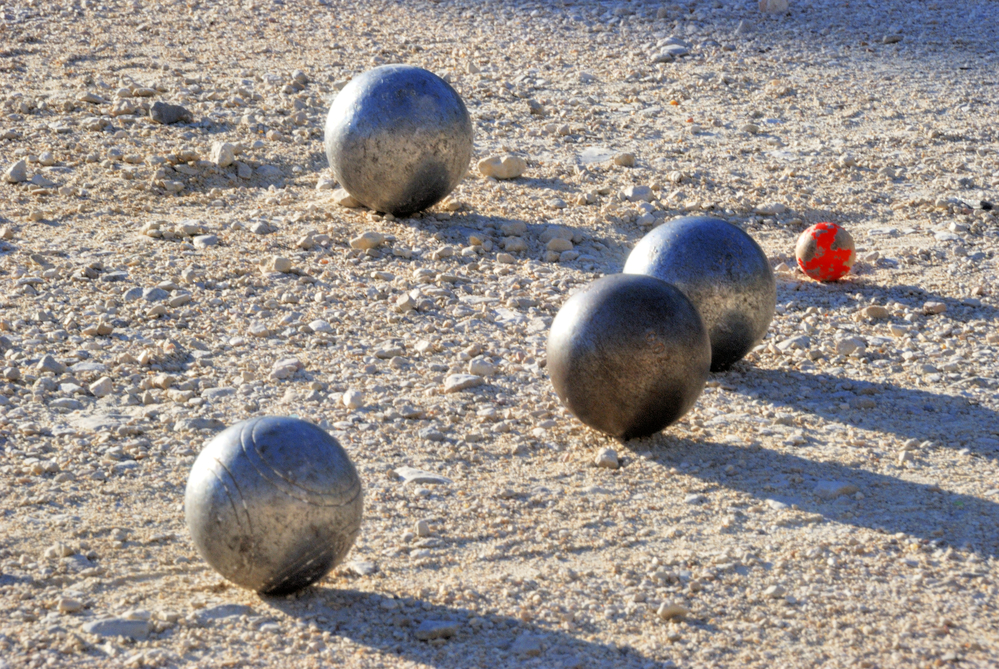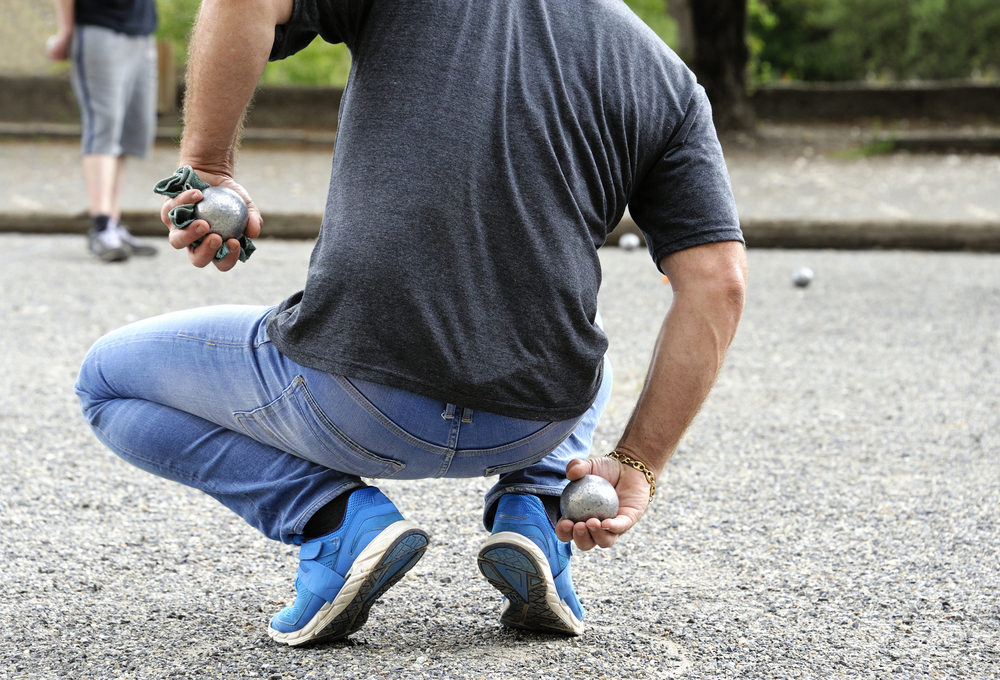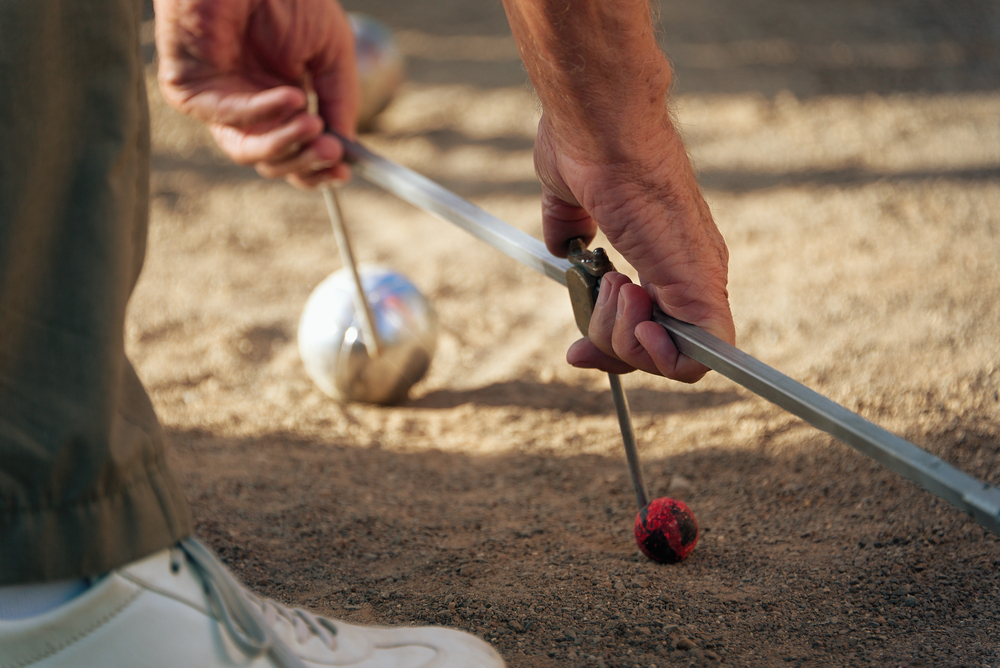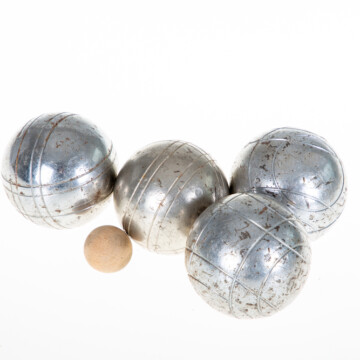
For many, petanque is a very easy game to play; the rules aren’t complicated in the least. But that doesn’t mean that you shouldn’t get familiar with them before you step out on the court. If you want to learn about the basic rules of petanque, this is the article for you.
By the end, you’ll be able to play Petanque from start to finish without wondering what is going on.
Contents
What Are Petanque Rules?
Petanque is a popular game often associated with the relaxed atmosphere of the south of France, but it has a strategic depth that keeps players engaged. Here's a breakdown of the rules of the game and how it’s typically played:
Equipment You Need
The first unofficial rule of petanque is to get your hands on the right equipment. You’ll need the following:
- Boules: Hollow steel balls. Each player or team has a set.
- Cochonnet: A small wooden ball that serves as the target ball. Note that cochonnets are often included in the average petanque ball set.
Without the proper equipment, you won’t be able to enjoy the game the way it was meant to be played. Luckily, you don’t need a lot of equipment to play pétanque.
Objective
The aim of petanque is to get your boules closer to the jack (cochonnet) than your opponent's boules.
Setting Up
With your equipment in hand, you’re ready to get going with a game of petanque. Here’s how to set up the game, from determining which player throws the first boule to delivering the cochonnet and more:
- Get into teams. Though Petanque is usually a 2-on-2 game, it can also be played one-on-one or three-on-three.
- Distribute all the boules. Pass out an even number of boules to each team according to the number of players per tea.
- Draw a circle on the ground. This is the circle each player must stand in while tossing the boules. It should be anywhere between 13.78 inches and 19.69 inches in diameter.
- Do a coin toss to determine who goes first. The winner of the coin toss (Team A) will be the first to throw the cochonnet.
- Throw the Cochonnet. The same team will choose a player to throw the cochonnet. It should be thrown underhand and ideally land 6-10 meters away from the throwing circle. If it’s thrown too close to the circle, the game will likely be too easy for the average player.
- Throw the first boule. The team that threw the cochonnet will now throw their first boule in the same manner, aiming to get as close to the cochonnet as possible. When tossing the boule, they have to keep their feet in the circle.
- Taking Turns. The other team (Team B), or opposing player will alternate with Team A, throwing their remaining boules.
- Closest Boule. After all boules are thrown, the player or team with the boule closest to the jack wins the round.
- Starting a second round. To start the next round, the winning team draws a new circle around the cochonnet to mark the old placement, then picks up the cochonnet and tosses it in either direction to start the second or preceding rounds.
- Game ends. The game ends when each team run out of boules.

How Do You Score in Petanque?
Though Petanque is simple overall, some people may very quickly become confused by the scoring rules. We’ve decided to break it all down for you in this section to ensure everyone can easily understand:
Only One Player or Team Scores Points in a Round
In each round, only the player or team with the closest boule to the cochonnet scores. So, if you have a boule that's 3 inches away from the cochonnet and your opponent's closest boule is 4 inches away, you would be the one scoring or earning the point. This can be pretty intense because even if you have multiple boules closer to the cochonnet, you won't get any points if your opponent manages to get a boule closer than all of yours.
Number of Points
The number of points you score in a round is based on how many of your boules are closest to the cochonnet than your opponent's closest boule.
For example, if you have three boules that are 3, 4, and 5 inches away from the cochonnet, and your opponent's closest is 6 inches away, you score 3 points—one point for each of your closer boules.
This rule emphasizes the importance of each throw between the two teams, and you'll often see some really skilled "shooting" to knock away an opponent's boule and change the potential point outcome.
First to 13 Points
The winning team reaches 13 points first. This is traditional, but you can change the rules for a shorter or longer game if you'd like. Reaching 13 points can happen pretty quickly if one side is dominating, but games can also become nail-biters or down to the wire if the teams are evenly matched.
The "first to 13" rule also helps keep the game within a manageable time frame, which makes it easier to get in a quick game or two—or even hold a mini-tournament if you're up for it.

How Is Petanque Different From Bocce Rules?
The main differences between petanque and bocce rules include the following:
First, in bocce, you take several steps forward before throwing the ball. But in Petanque, that’s not the case. You must release the ball while you’re standing still inside the circle with your feet planted; you can’t take any steps.
Second, players throw pétanque balls underhand, while bocce players throw the ball underhand like ten-pin or regular bowlers do.
Are you totally new to bocce? Read this article to get up to speed.
Additional Petanque Rules Beginners Should Know
The great thing about playing pétanque casually is that you don’t have to play by all the rules. But if you want a feel of an authentic game, be sure to read the information below first - here are some additional petanque rules beginners should know about:
- Circle Diameter (35cm to 50cm): The circle serves as the throwing point for players. Its diameter must range between 35cm and 50cm. This standardized size ensures that all players have a similar throwing area, which is crucial for fair competition.
- Cochonnet Distance (At least 1m from the circle and no more than 10m): The cochonnet, or "piglet" in French, serves as the target. It must land at least one meter away from the throwing circle but not more than 10 meters. This rule is to make sure the game is neither too easy nor too challenging, striking a balance that adds strategic depth.
- Feet in Circle (Must stay inside and on the ground while throwing): When throwing, players must keep both feet inside the circle and in contact with the ground. This constraint standardizes the throwing posture, ensuring that no one has an unfair advantage.
- No Stepping Out (Don't leave the circle before the boule lands): Players cannot step out of the circle until the thrown boule has landed. This maintains the integrity of the throw.
- Approved Boules (Must meet official specs in tournaments): In official settings, the boules must meet certain criteria for weight, diameter, and material. This ensures that all players are on an even playing field in terms of equipment.
- Single Cochonnet (One per game that meets the size and material requirements): Only one cochonnet should be in play and must meet size and material standards. This ensures consistency and fairness in scoring.
- Throwing Order (Must be maintained each round): The order in which players throw their boules must remain consistent during each round. This rule eliminates any advantage that could be gained by changing the throwing sequence.
- Time Limit (One minute to throw after the last boule stops): Players typically have up to one minute to complete their throw after the previous boule has stopped moving. This keeps the game moving and prevents unnecessary delays. After the time has expired, the turn moves to the next player.
- No Touching (Can't touch boules or cochonnet during play): Players are not allowed to touch the boules or the cochonnet once play has started, except for measuring purposes. This rule prevents any tampering or repositioning that could affect the outcome.
- Closest Boule Scores (Only one team can score per round): Only the team whose boule is closest to the cochonnet can score in that round. This emphasizes the importance of skillful throwing and strategic planning. The opposing team will get 0 points.
These guidelines help maintain a fair and standardized game, whether you're in a casual setting or a more formal tournament.
How Many Balls Does Each Player Get In Petanque?
The number of players determines how many boules each player will get during each round. Here’s how that goes:
- Playing 1 on 1 - 3 boules each
- Playing 2 on 2 - 3 boules each
- Playing 3 on 3 - 2 boules each
Related Articles
So, there you have everything you need to know about petanque rules. We hope you found all the information you were looking for, and we wish you hours and hours of fun playing this amazing sport. Are you interested in experiencing the fun of lawn bowls, bocce ball, or traditional bowling? If so, that's great! We've got lots of great information about those sports as well.
Kira Byrd, a Certified Fraud Examiner, holds a B.S. in Accounting from the University of Alabama at Birmingham. With a passion for bowling from her childhood, Kira has poured her expertise and personal experiences into creating and nurturing Bowling For Beginners. Kira's mission is to meet new bowlers where they are and guide them toward consistently achieving higher scores. With a focus on skill development and strategic techniques, she empowers readers to take control of their game and unlock their true potential.
Bowling For Beginners embodies strict editorial integrity, ensuring reliable and unbiased information. Kira's commitment to delivering valuable insights and practical strategies is reflected in every article. Here's an explanation of our editorial policy and how we get money.




